Thin-Walled CFST Columns for Enhancing Seismic Collapse Performance of High-Rise Steel Frames
Abstract
:1. Introduction
2. Modeling and Analysis Methods
2.1. Simplified Fiber Element Models
2.2. Thin-Walled Steel Columns
3. Seismic Performance of the Thin-Walled SMRFs
3.1. Building Models
3.2. Model Validation
3.3. Dynamic Analysis
4. Collapse Mitigation Using CFST Columns
4.1. CFST Columns with Equivalent Capacity
4.2. Collapse Capacity Enhancement
5. Conclusions
Acknowledgments
Author Contributions
Conflicts of Interest
References
- Architectural Institute of Japan. Preliminary Reconnaissance Report on the 2011 Off the Pacificcoast of Tohoku Earthquake; Architectural Institute of Japan: Tokyo, Japan, 2011. [Google Scholar]
- Architectural Institute of Japan. Structural Response and Performance for Long Period Seismic Ground Motions; Architectural Institute of Japan: Tokyo, Japan, 2007. [Google Scholar]
- Nakamura, T.; Uetani, K. Symmetry Limit Theory for Steel Beam-Columns (Part 1: A General Formulation). J. Struct. Constr. Eng. 1989, 398, 109–119. [Google Scholar]
- Nakamura, T.; Uetani, K. Symmetry Limit Theory for Steel Beam-Columns (Part 2: Finite Element Analysis. J. Struct. Constr. Eng. 1990, 408, 43–54. [Google Scholar]
- Uetani, K.; Tagawa, H. Deformation Concentration Phenomena in the Process of Dynamic Collapse of Weak-Beam-Type Frames. J. Struct. Constr. Eng. 1996, 483, 51–60. [Google Scholar]
- Chung, Y.; Nagae, T.; Hitaka, T.; Nakashima, M. Seismic Resistance, Capacity of High-Rise Buildings Subjected to Long-Period Ground Motions: E-Defense Shaking Table Test. J. Struct. Eng. 2010, 136, 637–644. [Google Scholar] [CrossRef]
- Lignos, D.G.; Krawinkler, H.; Whittaker, A.S. Prediction and validation of sidesway collapse of two scale models of a 4-story steel moment frame. Earthq. Eng. Struct. Dyn. 2011, 40, 807–825. [Google Scholar] [CrossRef]
- Tao, Z.; Han, L.H.; Zhao, X.L. Behaviour of concrete-filled double skin (CHS inner and CHS outer) steel tubular stub columns and beam-columns. J. Constr. Steel Res. 2004, 60, 1129–1158. [Google Scholar] [CrossRef]
- Tao, Z.; Han, L.H.; Zhao, X.L. Experimental behaviour of stiffened concrete-filled thin-walled hollow steel structural (HSS) stub columns. J. Constr. Steel Res. 2005, 61, 962–983. [Google Scholar] [CrossRef]
- Patel, V.I.; Uy, B.; Prajwal, K.A.; Aslani, F. Confined concrete model of circular, elliptical and octagonal CFST short columns. Steel Compos. Struct. Int. J. 2016, 22, 497–520. [Google Scholar] [CrossRef]
- Patel, V.I.; Liang, Q.Q.; Hadi, M.N.S. Numerical analysis of high-strength concrete-filled steel tubular slender beam-columns under cyclic loading. J. Const. Steel Res. 2014, 92, 183–194. [Google Scholar] [CrossRef]
- Montuori, R.; Piluso, V. Analysis and modelling of CFT members: Moment curvature analysis. Thin-Walled Struct. 2015, 86, 157–166. [Google Scholar] [CrossRef]
- Elremaily, A.; Azizinamini, A. Behavior and strength of circular concrete-filled tube columns. J. Constr. Steel Res. 2002, 58, 1567–1591. [Google Scholar] [CrossRef]
- Shams, M.; Saadeghvaziri, M.A. Nonlinear response of concrete-filled steel tubular columns under axial loading. ACI Struct. J. 1999, 96, 1009–1017. [Google Scholar]
- Susantha, K.A.S.; Ge, H.; Usami, T. Cyclic analysis and capacity prediction of concrete-filled steel box columns. Earthq. Eng. Struct. Dyn. 2002, 31, 195–216. [Google Scholar] [CrossRef]
- Kawano, A.; Sakino, K. Seismic Resistance of CFT trusses. Eng. Struct. 2003, 25, 607–619. [Google Scholar] [CrossRef]
- Kawano, A.; Nejime, H.; Tokuda, M. Seismic-Resistant Capacity of Steel Multi-Story Frames with CFT Truss Beams. J. Struct. Constr. Eng. 2005, 589, 181–185. [Google Scholar]
- Kawakami, S.; Kawano, A.; Okamoto, Y. A method to Improve Distribution of Story Drift Angle Responses in CFT Moment-Resistant Frames under Severe Earthquake. J. Struct. Constr. Eng. 2004, 585, 223–229. [Google Scholar]
- Nakahara, H.; Sakino, K.; Kawano, A. Bond Behavior of Concrete Filled Steel Tubular Frames under Cyclic Horizontal Load. J. Struct. Constr. Eng. 2008, 73, 465–472. [Google Scholar] [CrossRef]
- Han, L.; Li, W.; Yang, Y. Seismic behaviour of concrete-filled steel tubular frame to RC shear wall high-rise mixed structures. J. Constr. Steel Res. 2009, 65, 1249–1260. [Google Scholar] [CrossRef]
- Denavit, M.D.; Hajjar, J.F. Nonlinear Seismic Analysis of Circular Concrete-Filled Steel Tube Members and Frames. J. Struct. Eng. 2012, 138, 1089–1098. [Google Scholar] [CrossRef]
- Bai, Y.; Kawano, A.; Odawara, K.; Matsuo, S. Constitutive models for hollow steel tubes and concrete filled steel tubes considering the strength deterioration. J. Constr. Steel Res. 2012, 77, 1141–1150. [Google Scholar] [CrossRef]
- Bai, Y.; Lin, X.; Mou, B. Numerical modeling on post-local buckling behavior of circular and square concrete filled steel tubular beam columns. Int. J. Steel Struct. 2016, 16, 1–16. [Google Scholar] [CrossRef]
- Bai, Y.; Lin, X. Numerical simulation of collapse behavior of steel resistant frame considering post local buckling behavior. Thin Walled Struct. 2015, 94, 424–434. [Google Scholar]
- Ministry of Land, Infrastructure, Transport and Tourism. Building Standards Act of Japan; MLIT: Tokyo, Japan, 2007.
- Architectural Institute Japan. Recommendations for Design and Construction of Concrete Filled Steel Tubular Structures; Architectural Institute of Japan: Tokyo, Japan, 2008. [Google Scholar]
- Bai, Y.; Shi, Y.; Deng, K. Collapse analysis of high-rise steel moment frames incorporating deterioration effects of column axial force-bending moment interaction. Eng. Struct. 2016, 127, 402–415. [Google Scholar] [CrossRef]
- Sakai, J.; Matsui, C.; Yanagida, Y.; Hitaka, T.; Inumaru, K. A Study on Elastic-Plastic Behavior of 3-Story Frames with CFT Columns (Part 1); Summaries of Technical Papers of Annual Meeting Architectural Institute of Japan; C-1, Structures III, Timber Structures Steel Structures Steel Reinforced Concrete Structures; Architectural Institute of Japan: Tokyo, Japan, 2001; pp. 1163–1164. [Google Scholar]
- Vamvatsikos, D.; Cornell, C.A. Incremental Dynamic Analysis. Earthq. Eng. Struct. Dyn. 2002, 31, 491–514. [Google Scholar] [CrossRef]
- Zareian, F.; Krawinkler, H. Assessment of probability of collapse and designfor collapse safety. Earthq. Eng. Struct. Dyn. 2007, 36, 1901–1914. [Google Scholar] [CrossRef]
- Liel, A.B.; Deierlein, G.G. Assessing the Collapse Risk of California’s Existing Reinforced Concrete Frame Structures: Metrics for Seismic Safety Decisions; Report No. 166; The John A. Blume Earthquake Engineering Center, Stanford University: Stanford, CA, USA, 2008. [Google Scholar]
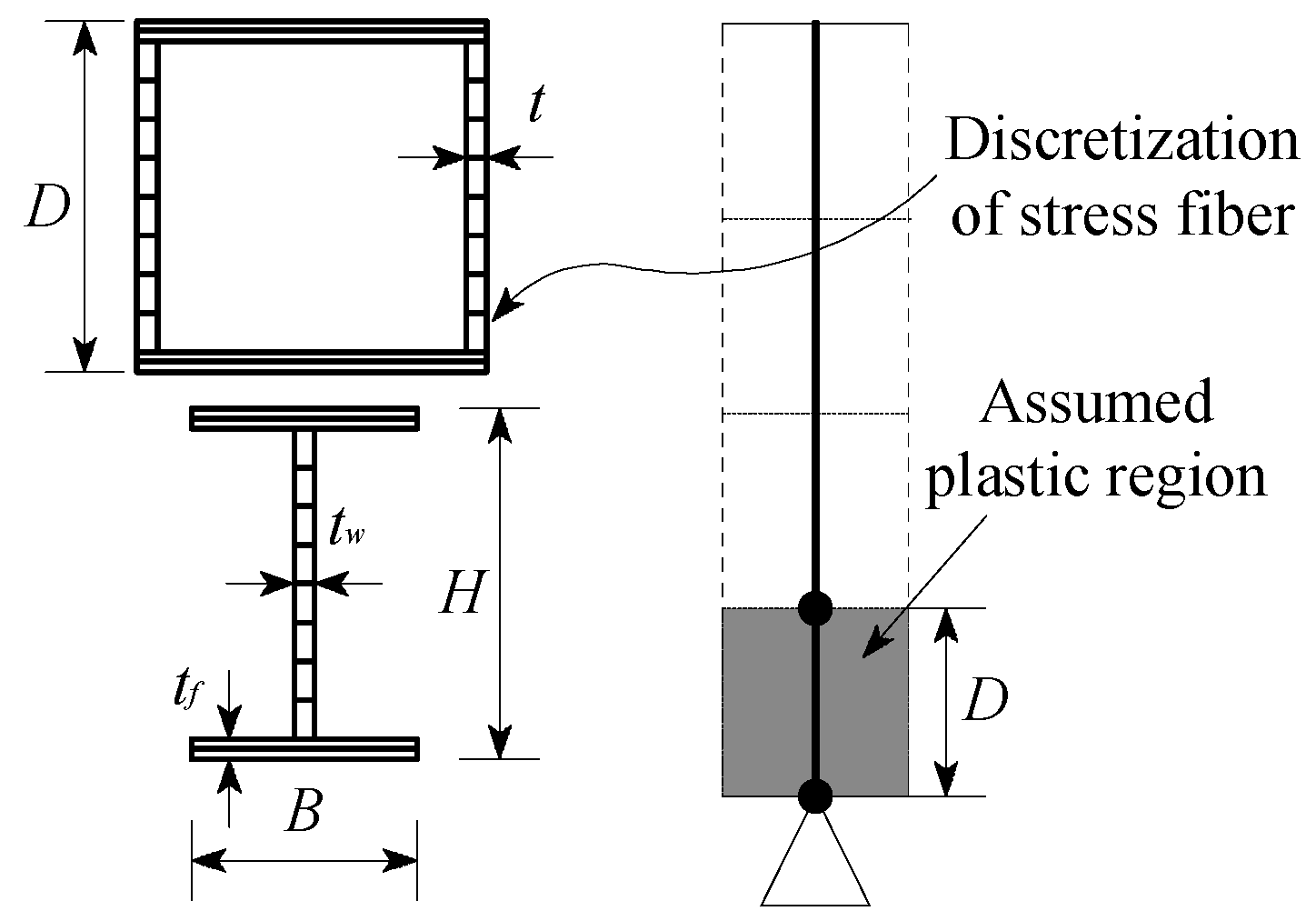

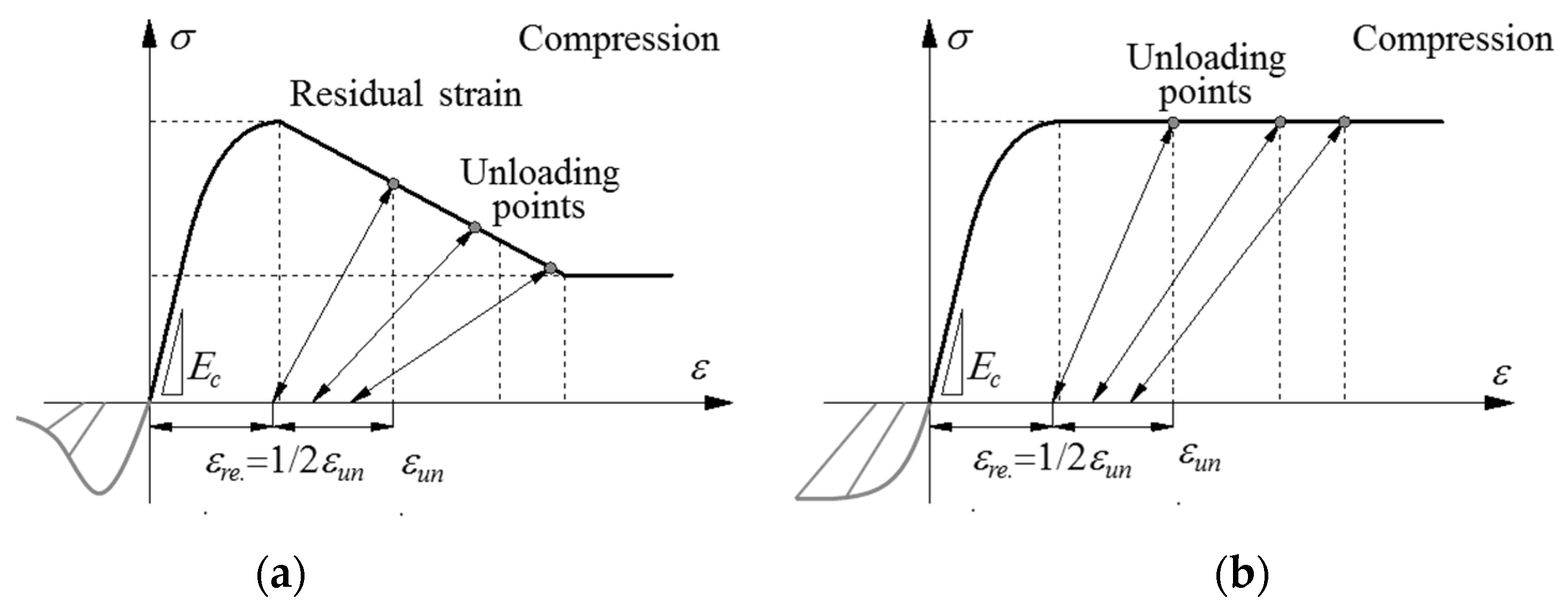
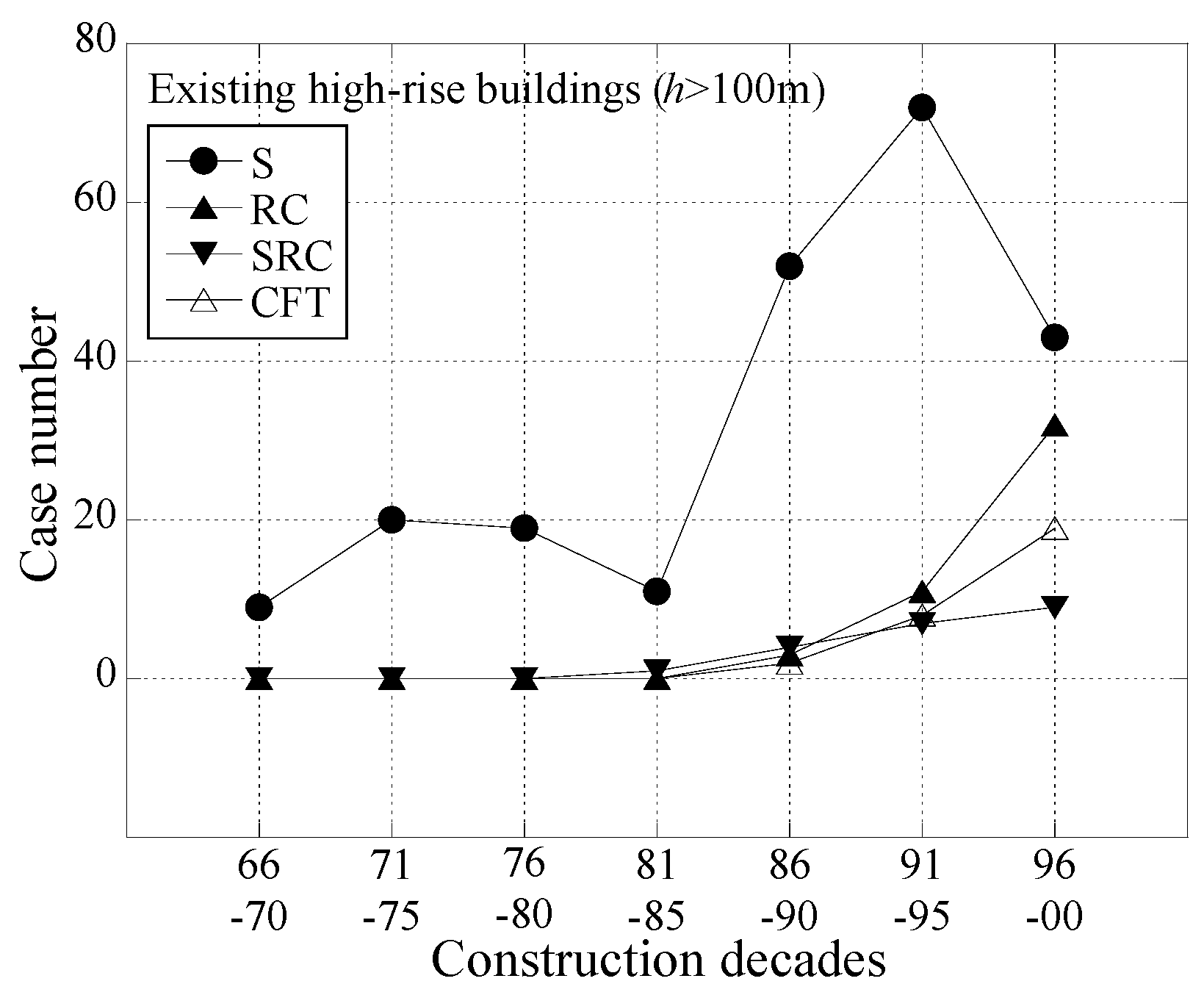
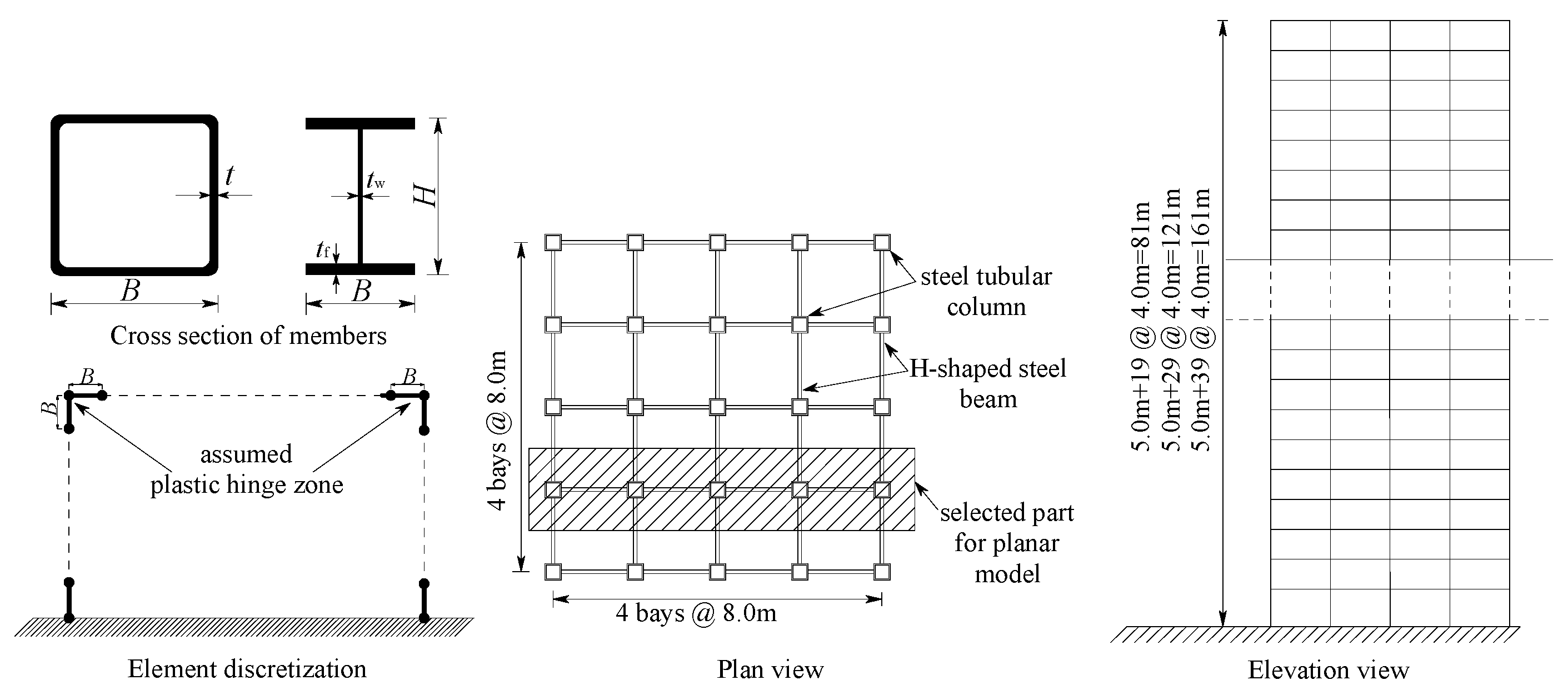

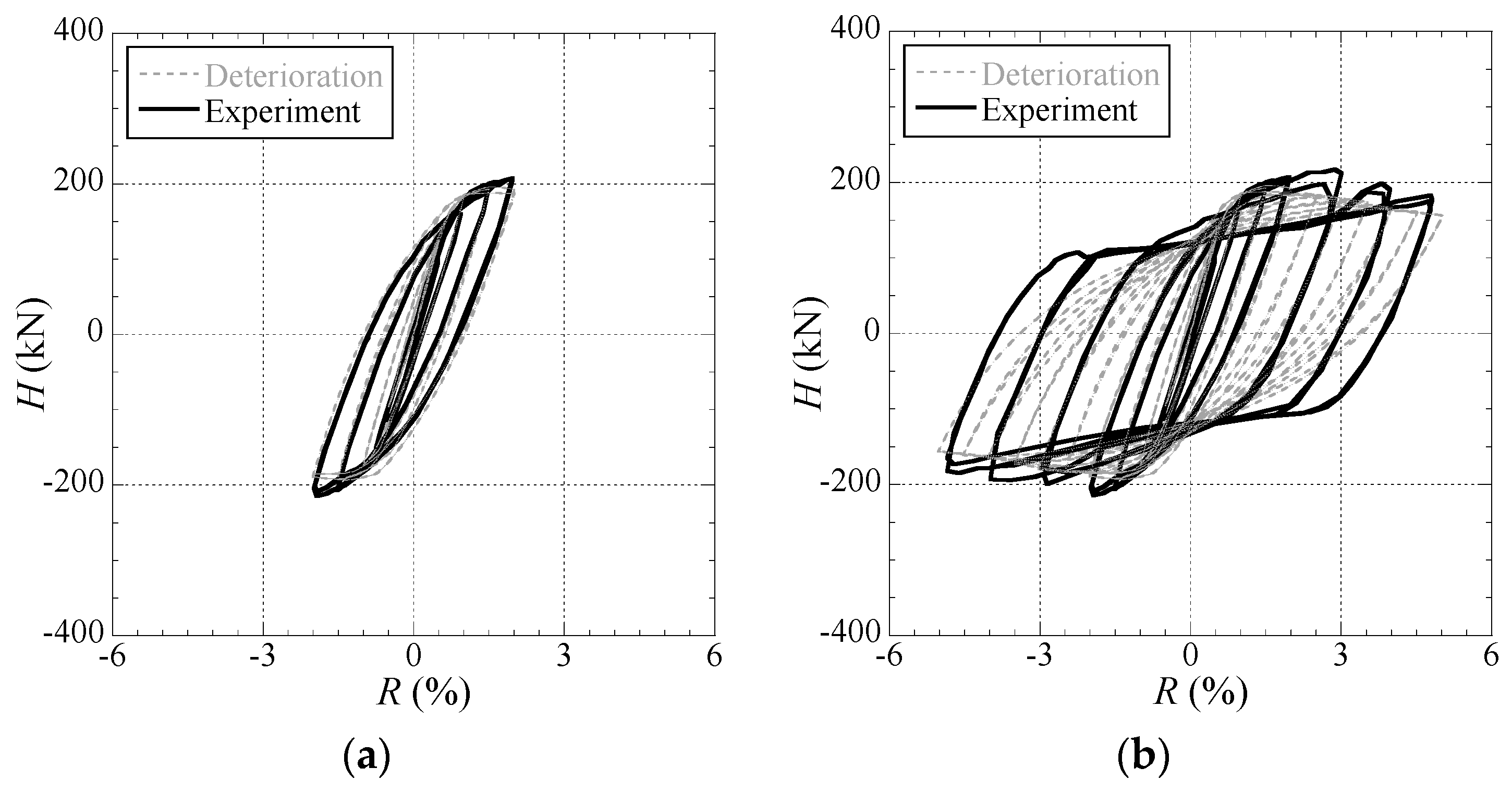
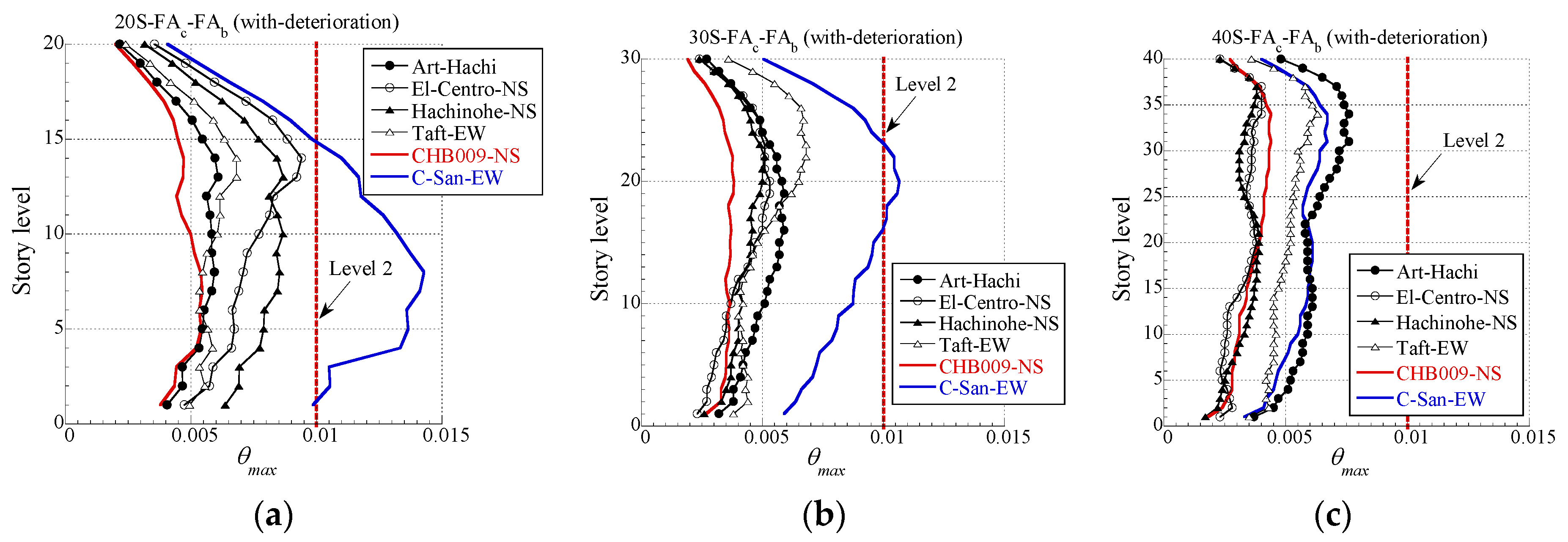
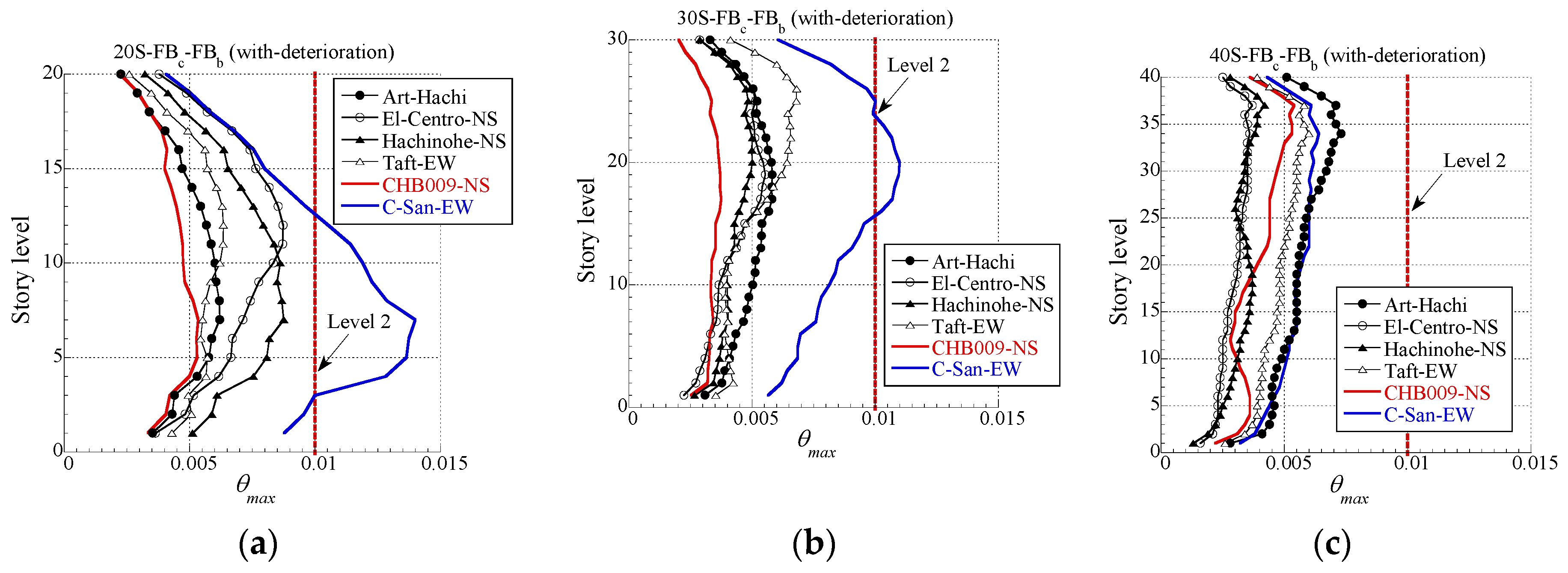
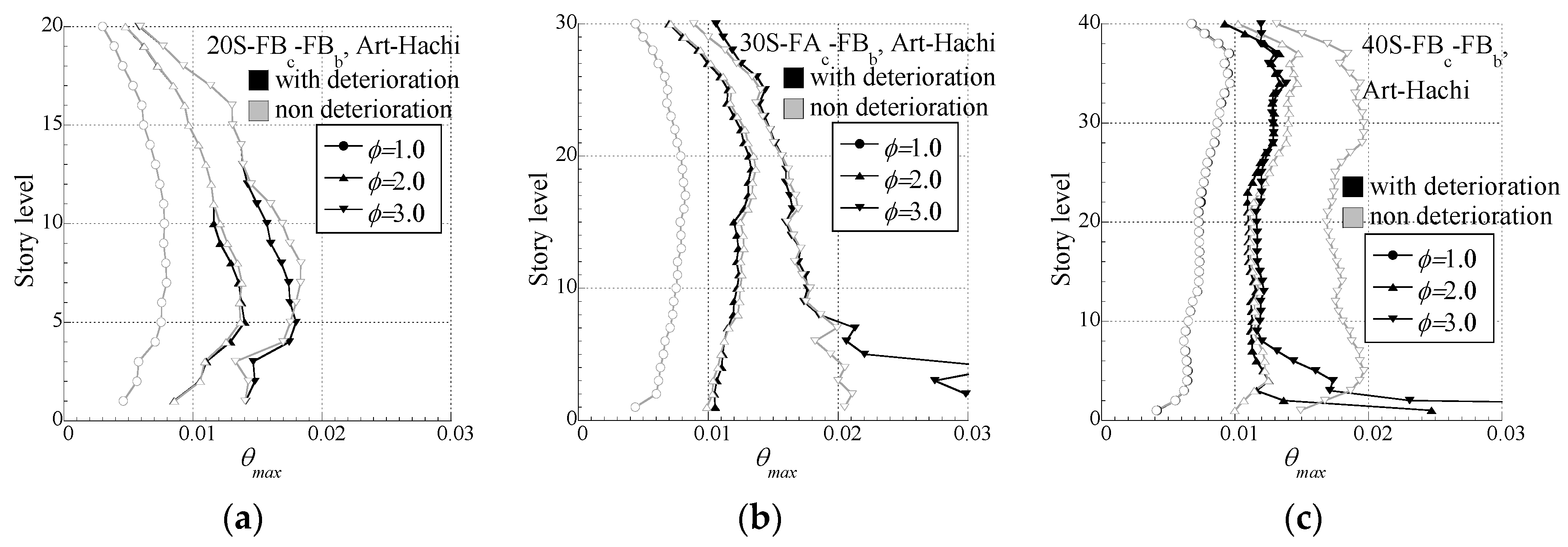


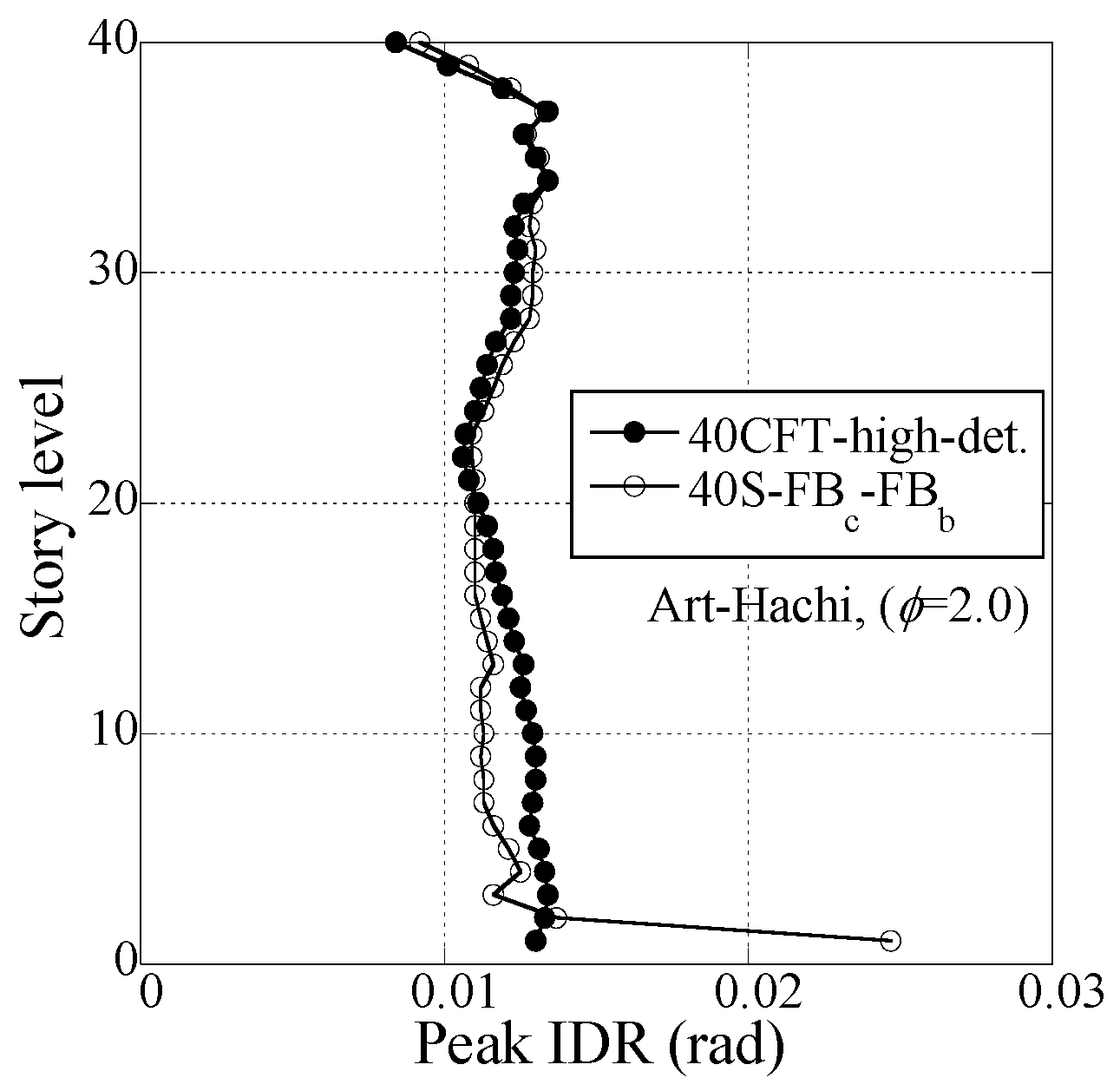
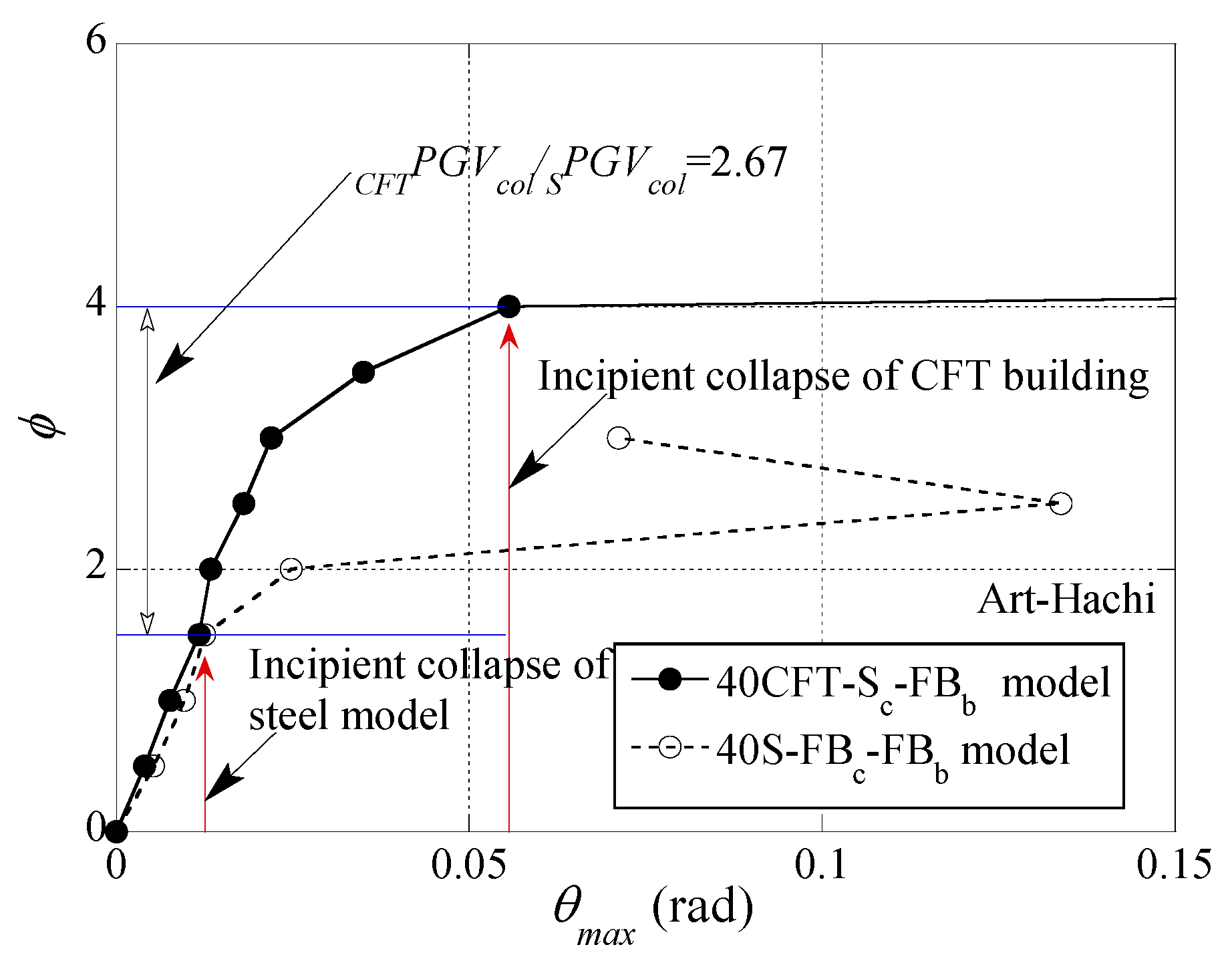
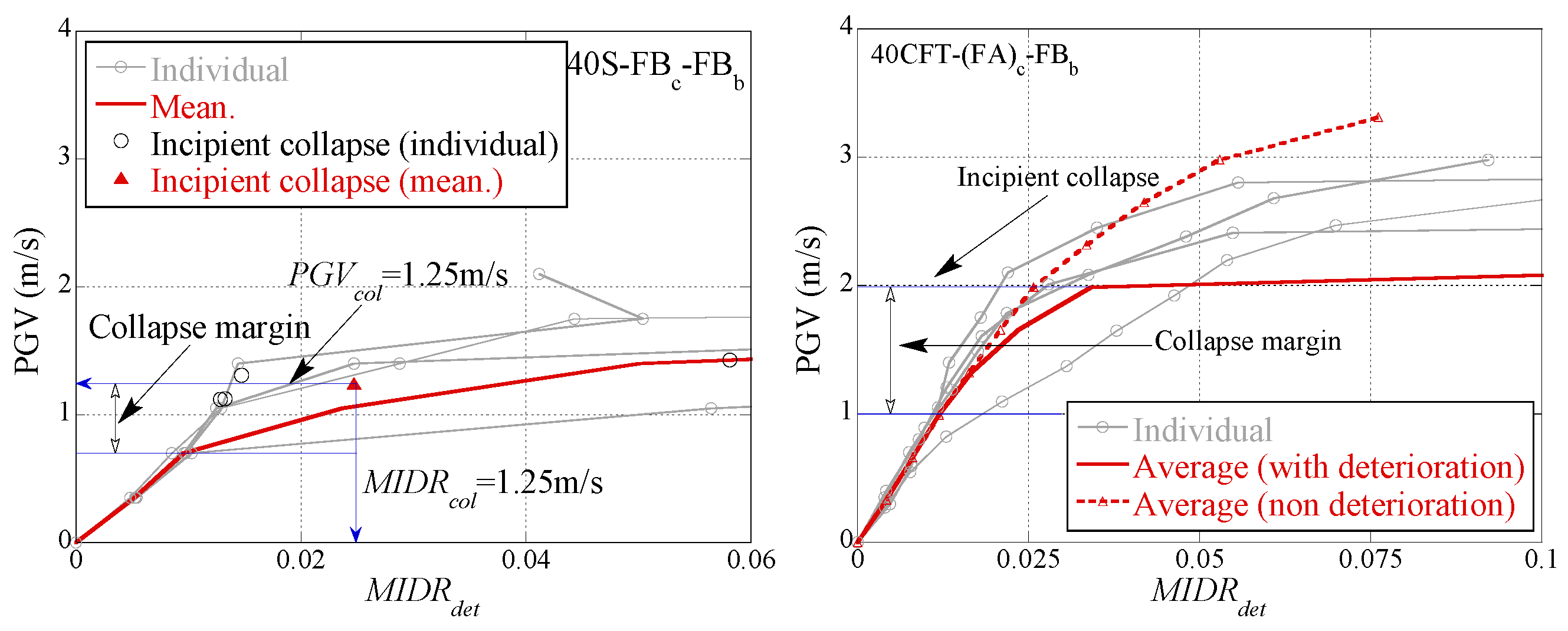
| Case | Component (Column, Beam) | Height (Story) | Width-to-Thickness Ranks (Column, Beam) | ‘First Mode’ Natural Period | B/t Ratio |
|---|---|---|---|---|---|
| SMRF 1 | HSS 1 columns, H-shaped beams | 81 m (20) | FA, FA | 2.32~2.38 s | 17~30 |
| 121 m (30) | FA, FB | 3.54~3.61 s | |||
| 161 m (40) | FB, FB | 4.53~4.66 s | |||
| CFST-MRF 1 | CFST columns, H-shaped beams | 81 m (20) | FA, FA | 2.26~2.32 s | 14~40 |
| 121 m (30) | FA, FB | 3.32~3.47 s | |||
| 161 m (40) | FA, FB | 4.12~4.38 s |
© 2017 by the authors; licensee MDPI, Basel, Switzerland. This article is an open access article distributed under the terms and conditions of the Creative Commons Attribution (CC-BY) license (http://creativecommons.org/licenses/by/4.0/).
Share and Cite
Bai, Y.; Wang, J.; Liu, Y.; Lin, X. Thin-Walled CFST Columns for Enhancing Seismic Collapse Performance of High-Rise Steel Frames. Appl. Sci. 2017, 7, 53. https://doi.org/10.3390/app7010053
Bai Y, Wang J, Liu Y, Lin X. Thin-Walled CFST Columns for Enhancing Seismic Collapse Performance of High-Rise Steel Frames. Applied Sciences. 2017; 7(1):53. https://doi.org/10.3390/app7010053
Chicago/Turabian StyleBai, Yongtao, Jiantao Wang, Yashuang Liu, and Xuchuan Lin. 2017. "Thin-Walled CFST Columns for Enhancing Seismic Collapse Performance of High-Rise Steel Frames" Applied Sciences 7, no. 1: 53. https://doi.org/10.3390/app7010053






